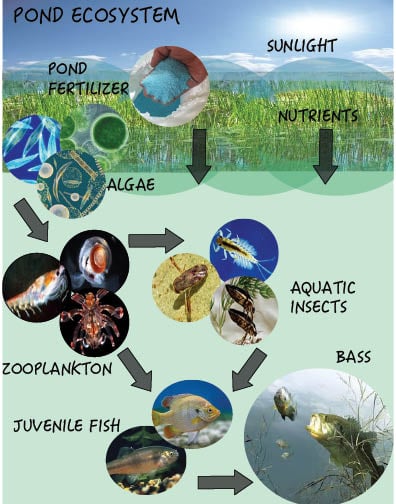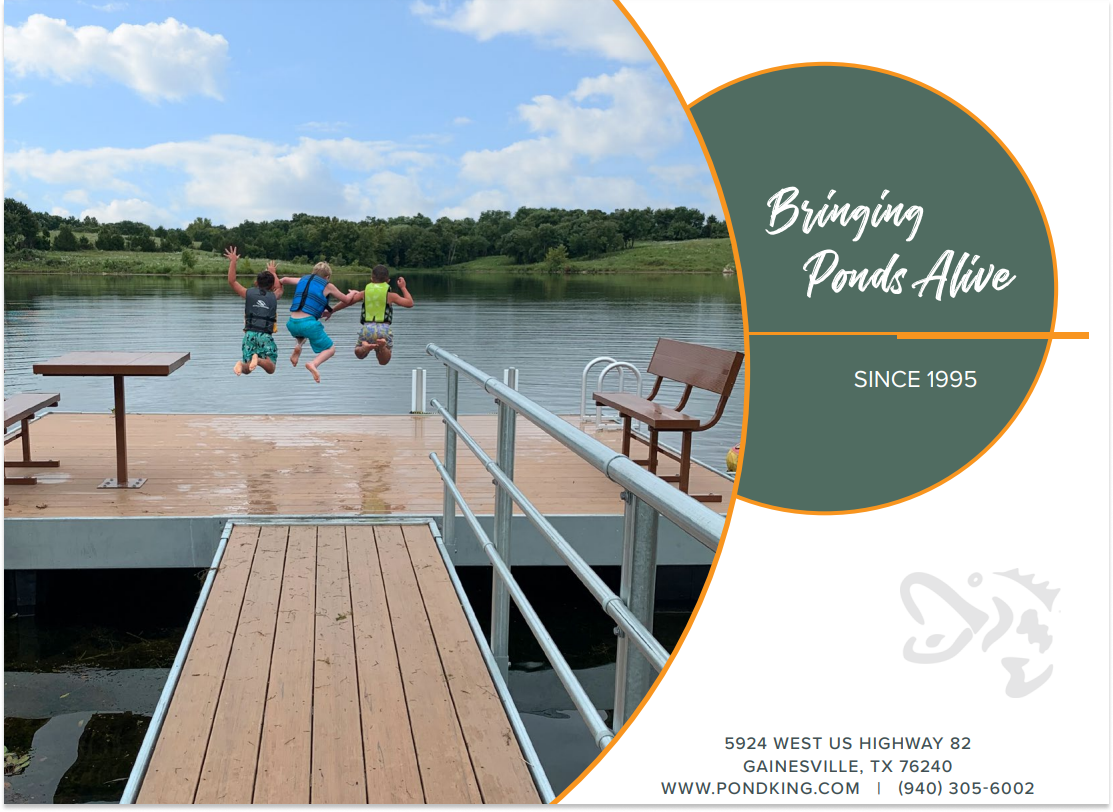Fertilizing your pond is a great way to grow bigger bass without breaking the bank. Fertilizing a pond allows pond owners to give their food chain a boost by increasing the amount of plankton in the water.
Like any aquatic ecosystem, the base of your lake or pond’s food chain is plankton. A fertile pond will produce not just more fish, but larger fish because even with a higher fish population there will also be an increased supply of food. Sounds like a no brainer, and it is, but there are 3 primary conditions necessary to effectively fertilize your pond:
Water Temperature
First, for effective fertilization, the pond’s water temperature must consistently stay above 60 degrees. In Texas, and the southern United States, that temperature is typically found in February to early March.

It is important for the pond to maintain this temperature because that warmth provides support for the plankton growth you are trying to create with the fertilization process.
Aquatic Vegetation
Second, check the present aquatic vegetation. If there is vegetation in the pond and it is fertilized, you could create an unintentional growth of unwanted moss.
Even beneficial pond plants like American Pond Weed can become a nuisance if over fertilized.
Water Clarity
Third, check the water clarity. A pond should have 18”-24” of visibility. Many times, pond owners are proud to have a clear pond, but that is not always ideal for the bass living in it. While it does make it easier for the bass to see their prey, it also allows the prey to see the bass coming, causing the bass to work harder and swim longer distances to catch their next meal. This is counterproductive when trying to grow larger bass. (See our blog “Why Are My Bass Skinny” for the science behind that.) Reduced visibility is also beneficial, as it will reduce the amount of sunlight that can reach the bottom, and discourage moss growth.
If you have the desired visibility prior to fertilizing, be sure that it is not due to suspended clay in the water column. Some ponds will have difficulty reaching desired visibility due to the type of soil that makes up the pond and surrounding areas. This may require alternative treatments, like adding lime to your pond. Finally, if your water is at the desired visibility, and has a greenish color to it, this is indicative of a plankton bloom, and you may not need to fertilize.
After you have fertilized you will notice a green color in your water. This is a planktonic algae, and is a good algae. This feeds your small baitfish, and does not stick on your hook. This spike in plankton population will feed your fish from the bottom of the chain, up. Therefore, the bass are going to have larger average meals and more fish to eat in a fertile pond. This allows them to travel less, resulting in fat bass. You can fertilize throughout the spring and summer as needed, depending on the factors mentioned above. We recommend using (12-61-0) fertilizer at an application rate of 10 lbs. per acre. Take advantage of this cheap and easy technique to improve your fishery!
Happy Fishing!
Brad Metzler, President



